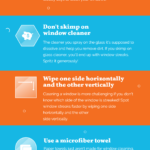Parents’ biggest worry is usually about how to keep their kids safe from stranger abduction and violence. However, many often disregard one of the greatest threats to the safety and well-being of their children in their own home.
Many experts believe that children between the ages of 1 and 4 are more likely to experience harm by choking, drowning, falls, fire burns, or poisoning, than by a stranger's violence.
About 9.2 million children suffer non-fatal unintentional injury, while more than 12,500 children die annually because of it. This reason is why it is so crucial to carefully and thoroughly childproof your home.
Here are a few simple steps to efficiently childproof your home.
Childproof your Home's Living Areas
- Move any pointy, sharp objects, like letter openers and scissors, away from busy, high-traffic areas.
- Place a sturdy safety gate at the bottom and the top of stairs to prevent a child from accidentally falling
- Put corner and edge guards on furniture and other items like a fireplace hearth to avoid accidental injuries from happening.
- Replace all your home's sockets with childproof ones to avoid accidental electrocution. Opt for slide covers rather than plastic covers, as the plastic covers can pose a choking hazard.
- Remove from the floor any small objects that a child could swallow: buttons, coins, nails, pins, and the like. Regularly sweep or vacuum the room to catch these objects before your child does.
- Remove plants from the floor, out of the child's reach, since some indoor flora is poisonous to both children and pets, including both the iris and poinsettia plants.
- Secure high bookcases and other tall furniture pieces, including their bedroom furniture like a chest of drawers or wardrobe, to the wall. This is so that your children cannot pull them down if they climb on them or open the drawers.
- Use doorknob covers and locking safety latches to keep small children away from areas with health and safety hazards such as toxic substances and swimming pools.
Childproof your Home's Nursery
- Ensure that mobiles and hanging toys installed in the crib are child-safe and large enough so that there is no chance of choking or strangulation. In fact, it is recommended that they are removed from the crib as soon as your baby is able to reach up and touch it, usually around 6 months.
- Make sure that your kid's toy chest is either be lidless or the lid stays up when it is open.
- Take away all unnecessary blankets, pillows, and stuffed plushies from your child's crib.
- Make use of cordless blinds or cut the blind cords in half to prevent accidental strangulation, if the cords are still long, then toss the cords upwards out of your child’s reach.
- Never place your kid's crib or other furniture near windows. This is to prevent children from climbing onto windowsills. Screens are not sturdy enough to keep children from falling through a window.
- Place a clean, sturdy carpet in the children's playroom. Make sure that it is soft enough for babies to play on and durable enough to endure wear-and-tear from toddlers.
Childproof your Home's Kitchen
- Keep all cleaning supplies in a high cabinet. Putting these products under the sink can pose a threat to your child. If you are unable to move them, you can put a secure child-proof lock on the cabinet door instead.
- Do not leave insect, mouse or any pest traps in areas where your baby or toddler may find them.
- Ensure that all knives and sharp utensils are out of your children’s reach and kept in a childproof container or a drawer with a childproof lock on it.
- Make sure that the oven and dishwasher doors are always fastened and locked when not in use.
- Store all kitchen appliances, like blenders and juicers in a secured place, where inquisitive children cannot reach.
- Use the back burners on your stove for cooking whenever possible.
- Position handles of pots and pans toward the back of the stove to keep them out of your child's reach.
Childproof your Home's Bathroom
- Avoid leaving water standing in the bath, the sink or even a bucket. Toddlers can even drown in very little water.
- Install toilet lid locks.
- Keep your hair dryers and electric rollers unplugged and out of their reach after usage. This is to avoid electrocution caused by water contact while they are plugged in the bathroom. That also helps to prevent accidental burns.
- Keep your medication, vitamins, and cosmetics away from your baby's reach. Store them in a childproof container or inside a locked bath cabinet.
- Set the water heater to a safe temperature of 120 degrees Fahrenheit to prevent accidental scalding from happening.
- Consider purchasing a faucet cover for safe bathing in the tub. Kids move very quickly and this is one way to stop them from banging their heads on the faucets.
- Make sure there is no way your baby might accidentally lock themselves in the bathroom.
- Keep your bathroom cleaning supplies out of your children’s reach, locked in a cupboard or placed on a high shelf that they cannot reach. Make use of childproof locks for the cabinets and drawers.
Do you have anything to add to the list above? Feel free to share them in the comments section below





